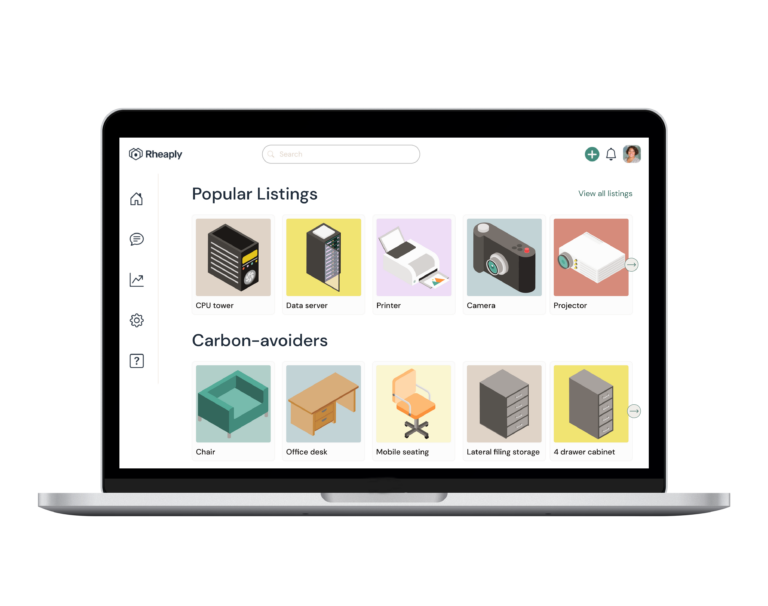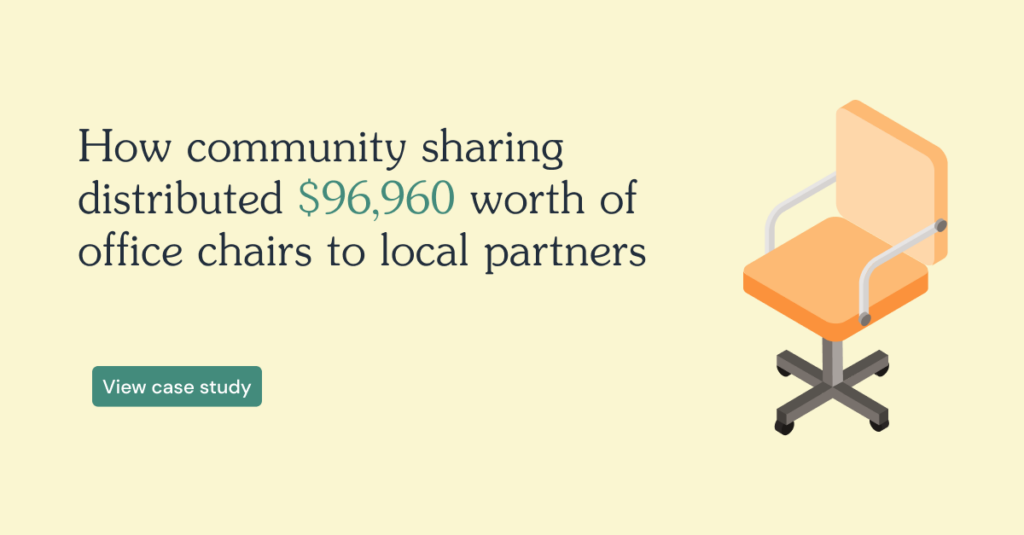Procurement Management System
Rheaply puts reuse on the table for every organization.
Procurement management system
A procurement management system is a comprehensive software solution designed to streamline the process of identifying and acquiring necessary goods and services for an organization from external sources. Procurement management systems help organizations manage and track all their procurement activities, from need identification, to vendor selection, to payment processing and recording.
Common procurement management system features include tracking supplier performance, managing purchase orders, optimizing inventory levels, and automating contract renewals. These automated features help organizations save time and money by reducing manual processes and improving efficiency in the supply chain.
Additionally, automated procurement management software can provide real-time visibility into procurement spending patterns so that companies can better understand their purchasing habits and make more informed decisions about future sourcing or goods or services. The best procurement management systems provide efficient ways for businesses to take control of their supply chains while also saving resources over time.
What is procurement management?
Procurement management oversees the entire process of obtaining goods or services to meet an organization’s needs. It involves every step and procedure necessary for the identification and acquisition of resources that are needed to support a business or organization and keep it productive.
The purpose of procurement management is to ensure that quality goods and services are acquired in a timely manner at the best possible price. Effective procurement management also maintains positive relationships with suppliers and ensures goods and services are sourced in a manner that aligns with the organization’s values.
There are various types of procurement methods that organizations use depending on the type of need. Three of the most common methods of procurement include direct procurement, indirect procurement, and strategic procurement.
- Direct procurement involves obtaining resources that directly impact the company’s finished product, such as raw materials or components.
- Indirect procurement involves acquiring resources necessary for the day-to-day operation of the organization, such as office supplies.
- Strategic procurement involves acquiring services (rather than goods) from external sources by outsourcing tasks to third-party providers.
A procurement manager is responsible for overseeing all aspects of the procurement process, from identifying potential suppliers to negotiating contracts. They may also be in charge of ensuring that legal requirements are met when procuring goods and services or spearheading sustainability initiatives.
Sustainable procurement
Sustainable procurement is the practice of sourcing goods and services in a manner that is environmentally friendly, socially responsible, and economically viable. A sustainable procurement process involves taking into consideration the environmental, social, and economic impacts of each purchase decision when selecting suppliers or products.
A sustainable process goes beyond traditional green purchasing in procurement to include considerations such as labor rights, animal welfare, product safety, waste management practices, and carbon emissions. Sustainable procurement can be valuable for organizations not only because it can help them reduce their environmental footprints but also because it can help them improve their reputations as responsible businesses.
Here are a few of the primary focuses of sustainable procurement:
- Environmental Impact: Sustainable procurement processes should strive to minimize environmental impact through the selection of reusable products and services.
- Social Responsibility: Companies should strive for ethical sourcing practices when selecting suppliers and materials in order to ensure that all stakeholders involved in production are treated fairly and ethically throughout the entire process.
- Cost Reduction: Sustainable procurement processes should seek to reduce costs through the identification of more efficient, cost-effective suppliers and materials. This can be achieved by reducing waste and improving efficiency in the supply chain.
- Risk Management: Sustainable procurement processes should also identify potential risks associated with suppliers, materials, and services that may affect the overall sustainability of a company’s operations. By understanding these risks, companies can ensure they are not exposed to unnecessary liabilities or losses due to poor procurement decisions.
An organization that wants to make a commitment to sustainable procurement should first develop a sustainable procurement policy. This policy should outline the organization’s pledge to sustainability and provide guidance on how this commitment will be implemented throughout every stage of the procurement process. The policy should also include specific criteria for evaluating potential suppliers based on their sustainability performance and any other relevant factors such as cost savings or quality standards.
Additionally, an effective sustainable procurement policy should identify which departments and teams are responsible for implementing sustainable procurement initiatives. Implementing the proper sustainability management tools can also help an organization oversee and track progress toward achieving its sustainable procurement goals.

Procurement management system software
Procurement management software is a type of software that helps organizations manage their procurement processes more efficiently and effectively. This software provides a comprehensive set of tools and features to help streamline the procurement process from need to payment and beyond.
Organizations can use procurement management software to automate many aspects of the procurement process, such as creating purchase orders, tracking inventory levels, managing supplier relationships, and monitoring budgets. A comprehensive procurement software list includes e-procurement software that enables online ordering and payments, procurement tools for analyzing data, procurement management system software for tracking purchases, top procurement software for automating procurement tasks, and more.
By utilizing a centralized, cloud-based solution like a procurement platform, companies can ensure secure access to data from anywhere at any time. Additional benefits of using procurement management software include:
- Improved accuracy in purchasing decisions
- Enhanced visibility into spending patterns
- Increased efficiency in processing orders
- Reduced paperwork associated with manual processes
- Better control over budgeting and forecasting activities
- Improved collaboration between departments or external vendors and suppliers
There are numerous options when it comes to selecting the right type of procurement management system. Organizations should consider their specific requirements before making any decisions regarding which type of system they should invest in.
Some of the most popular options include open-source solutions or proprietary systems from top procurement software companies. Additionally, there are numerous third-party vendors that offer specialized solutions tailored specifically towards certain industries such as healthcare or construction, or toward certain goals such as sustainability.
These specialized vendors may be able to provide additional value beyond what is offered by traditional procurement management system providers. Implementing an effective procurement management system can have a significant positive impact on an organization’s operational efficiency, sustainability, and bottom line while also helping to reduce risk.
Procurement Systems
Procurement systems are software solutions that automate the process of purchasing goods and services from external vendors. Procurement systems streamline the entire procurement process, from creating purchase orders to receiving invoices and making payments. These systems can also help organizations manage their inventory levels, track supplier performance, and analyze spending patterns.
A procurement system can help streamline every step of the procurement process, including:
1. Identifying needs
The first step of the procurement process steps is to identify what goods or services are needed and determine the specifications for those items.
2. Evaluating suppliers
Once needs have been identified, potential suppliers must be evaluated in terms of their ability to meet the requirements established in step one.
3. Negotiating contracts
After selecting a supplier that best meets the needs outlined in step one, negotiations should take place to ensure both parties understand all aspects of the agreement before signing a contract or purchase order.
4. Creating purchase orders
A purchase order is a legally binding document that outlines all details related to a transaction between two parties including pricing information, quantity ordered, and delivery dates. It also serves as an official record of goods or services purchased from a vendor by an organization or individual buyer for accounting purposes.
5. Processing payments
Payment processing typically occurs after the goods or services have been received by the organization. However, it can also take place prior to delivery if required by contract terms or requested by either party involved in the transaction.
6. Receiving and auditing orders
Upon receipt of goods or services from suppliers, it is important for organizations to audit the delivery against the original purchase order to ensure accuracy.
7. Recording transaction histories
It’s crucial for organizations to keep track of all transactions with external vendors. This helps them stay organized when managing accounts payable compliance and also provides insight into areas where cost savings could be achieved through better procurement procedures.
Sustainability criteria in a procurement policy
Organizations can use procurement management software to introduce sustainability into their supply chain and procurement practices. By leveraging an automated sustainability management tool, organizations can set up and track sustainability criteria in a procurement policy, such as reducing carbon emissions and waste, increasing the use of renewable energy sources, or using more sustainable materials. By automating the tracking of these criteria, organizations can ensure they are consistently following their policy guidelines.
Additionally, a procurement management software system can provide insight into the environmental impact of different suppliers and products throughout an organization’s supply chain. Organizations can use this insight to make more informed decisions on how best to reduce environmental impacts while still meeting operational needs.
Rheaply is one of the best software solutions for organizations that want to improve the sustainability of their procurement practices. Organizations can use Rheaply to streamline resource management, visualize impacts, and make data-driven decisions with the help of sustainability reports. Rheaply makes it easy to oversee sustainability in logistics and supply chain management from a convenient central platform.


